Dell Precision 3930 Internal Hardware Overview
Inside the system, we are going to do something a bit different. Instead of just going front to rear, we are going to instead focus on the three main sections oriented from bottom to top below: PSU, CPU, and GPU.
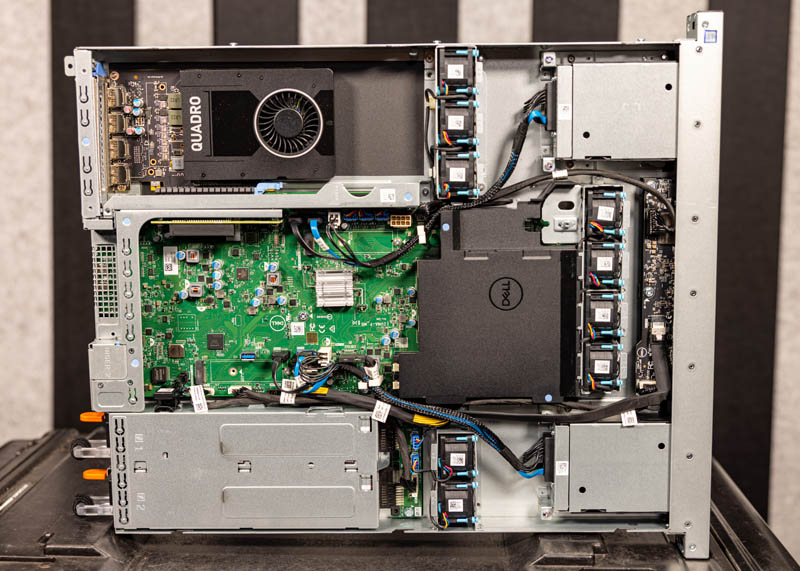
On the PSU side, we have two fans that help cool the drive(s) on the left side of the chassis. The fans in this system are wired since they are lower-cost 1U units. On low-cost 1U servers, wired fans are common.
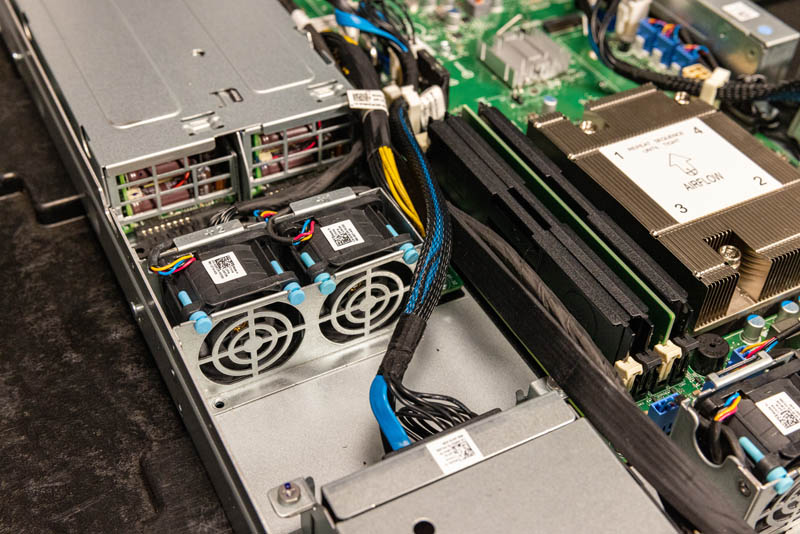
Behind the fans, we have a power distribution board since this is a redundant PSU server. In this system it is a relatively simple PDB compared to higher-end servers.
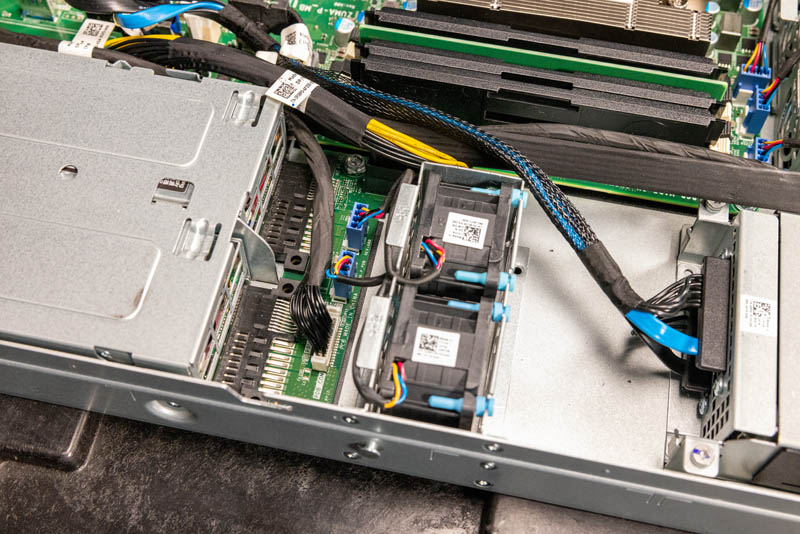
Moving to the center CPU section, we have a lot more going on.
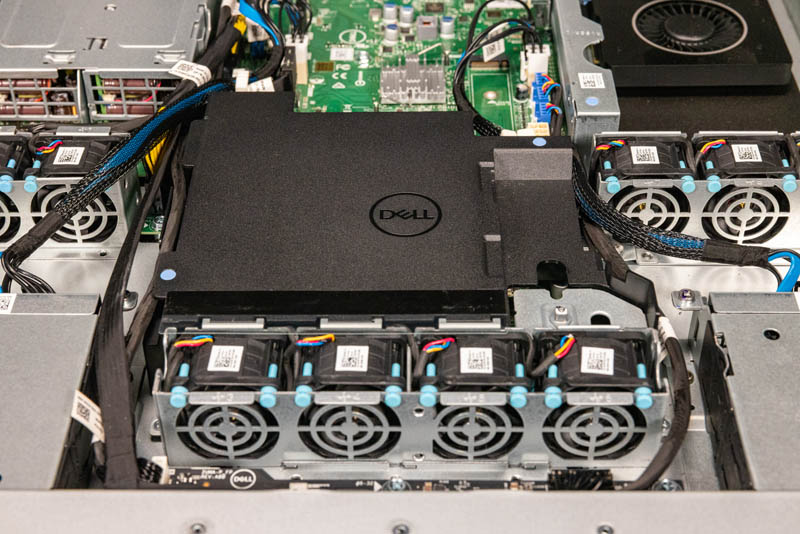
The CPU and memory are covered in a shroud that helps direct airflow. This is a lot of airflow since it is for a relatively low-power CPU and memory, but Dell is providing redundancy.
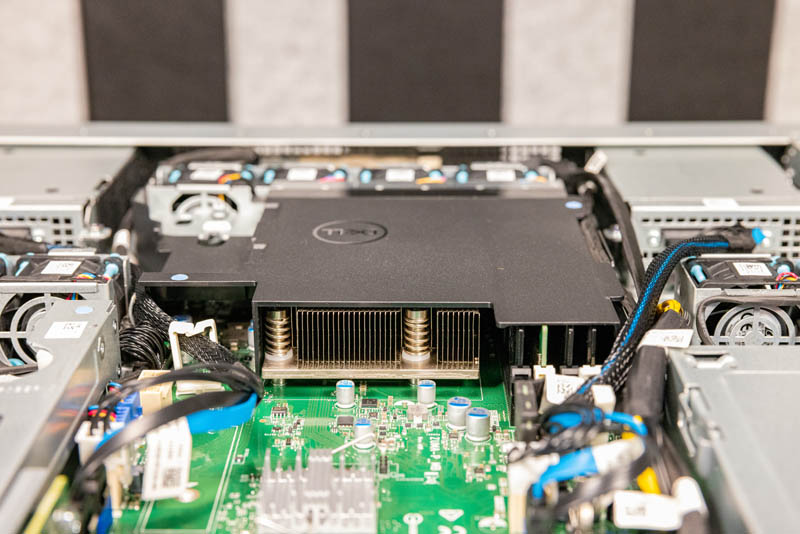
There are a total of four fans directing air through this shroud to the various components in this center section.
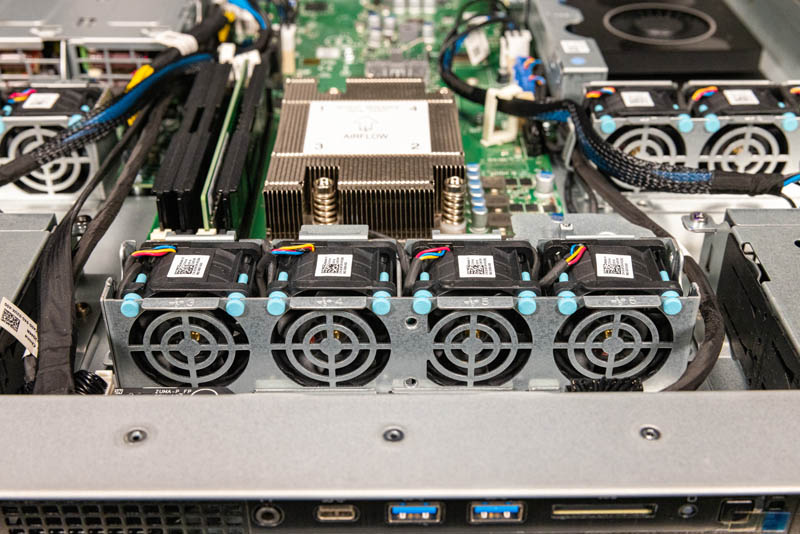
The CPU in this system is an Intel Xeon E-2146G. That is a 6-core/ 12-thread part. You can see our full Intel Xeon E-2146G Benchmarks and Review piece. This system also supports 8th and 9th gen Core processors as well as the Xeon E-2200 series. We have the most content online about these processors that you can find here: Intel Xeon E-2100 and Xeon E-2200 Coverage from STH Your Guide.
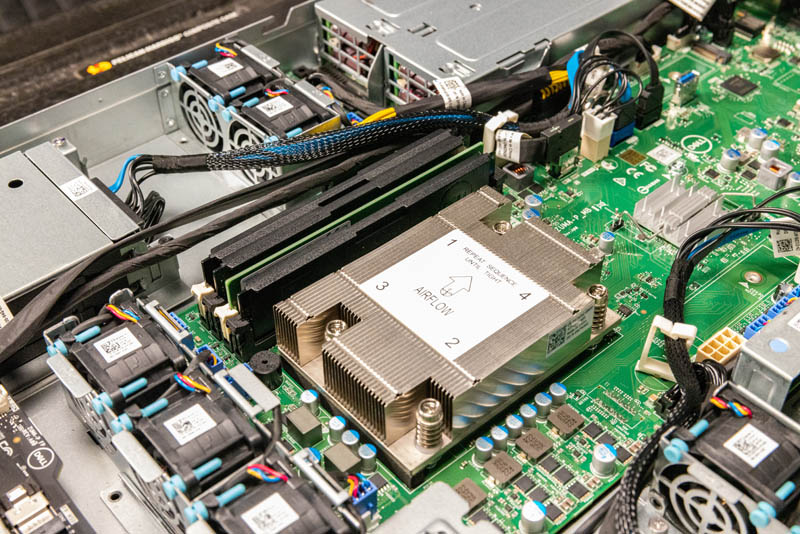
Since we have a Xeon CPU, we can utilize unbuffered ECC memory (Intel Core i7’s for example do not.) Considering the top-end Xeon E-2300 series CPUs have 8-cores, the E-2100/ E-2200 series are still very competitive albeit with PCIe Gen3, not Gen4.
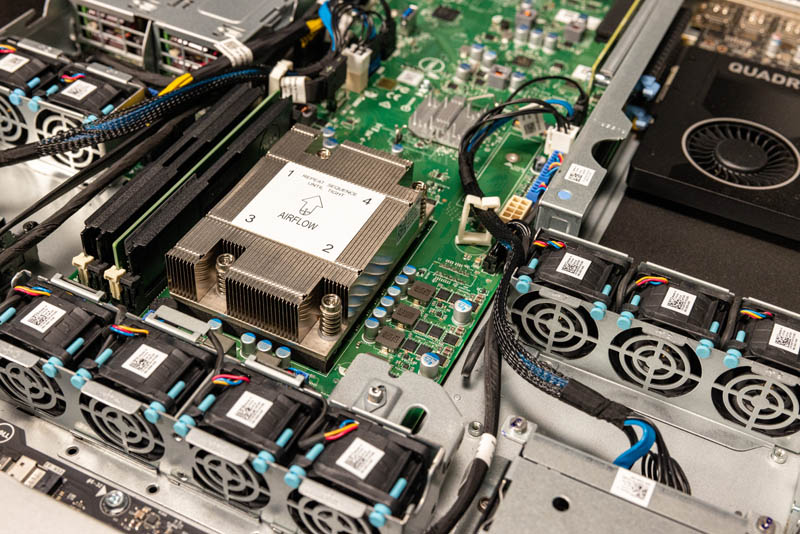
One of the big features of this system, compared to lower-end servers, is the ability to support GPUs. Our system has a GPU power connector, but we do not have the cable. The cable comes with GPUs that need auxiliary power.
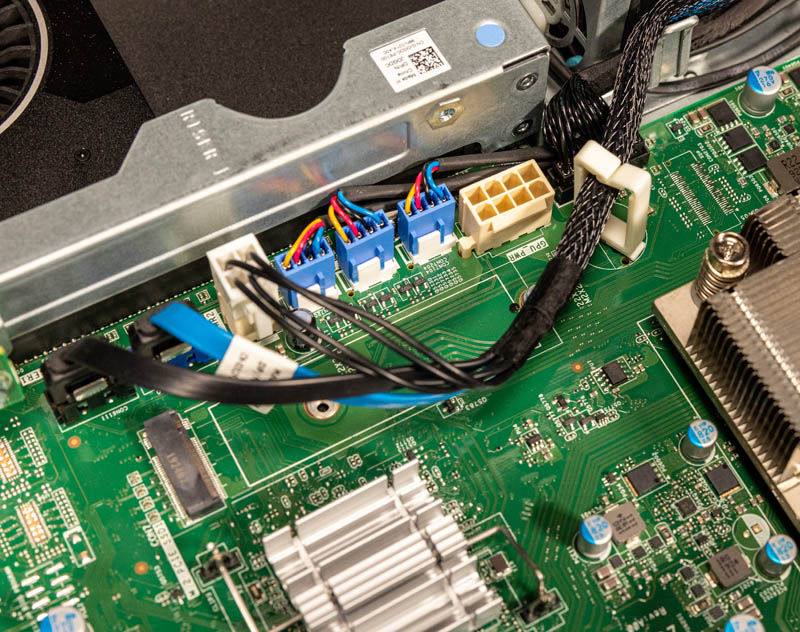
One can also see the PCH under the heatsink, but the more impactful feature is the M.2 slot. This is a M.2 NVMe slot that can be used to add another SSD.
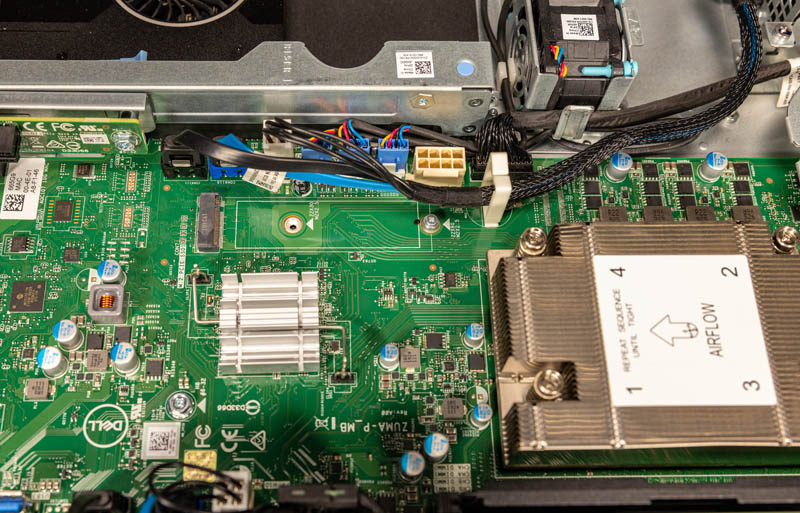
That is not the only M.2 slot though. There is also one next to the USB 3 Type-A header inside the chassis. Dell’s documentation says that this is SATA or PCIe/ NVMe but we did not get to test that. Usually, Dell’s documentation is fairly good, especially when it is marked on the motherboard.
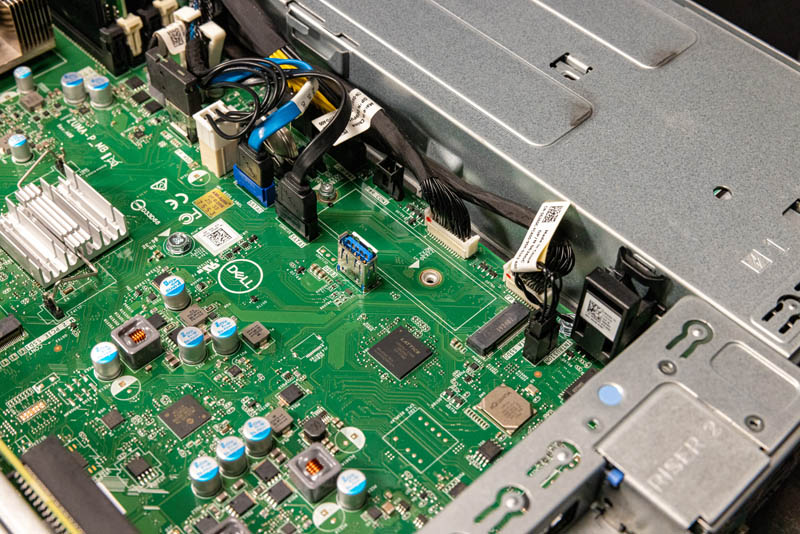
There is also a PCIe slot that is a PCIe Gen3 x4 slot in the center of the chassis for additional expansion.
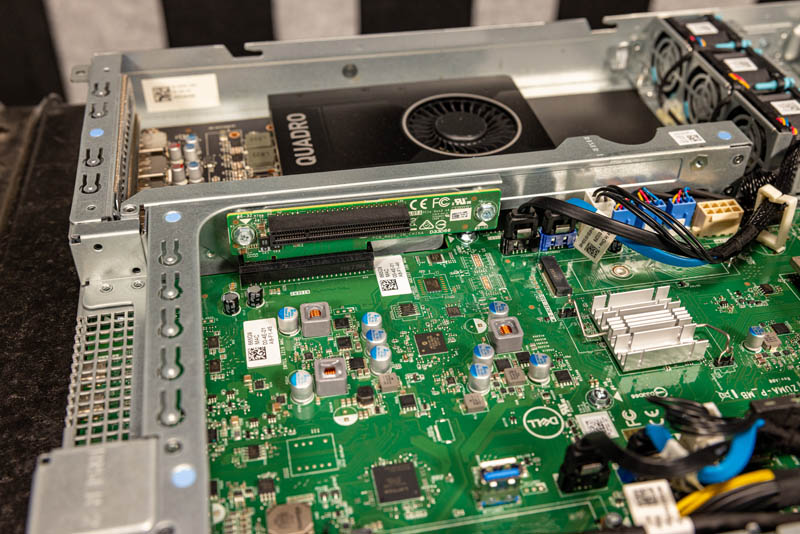
The final third of the chassis has three fans behind the right-side drive bays. This is for GPU cooling.
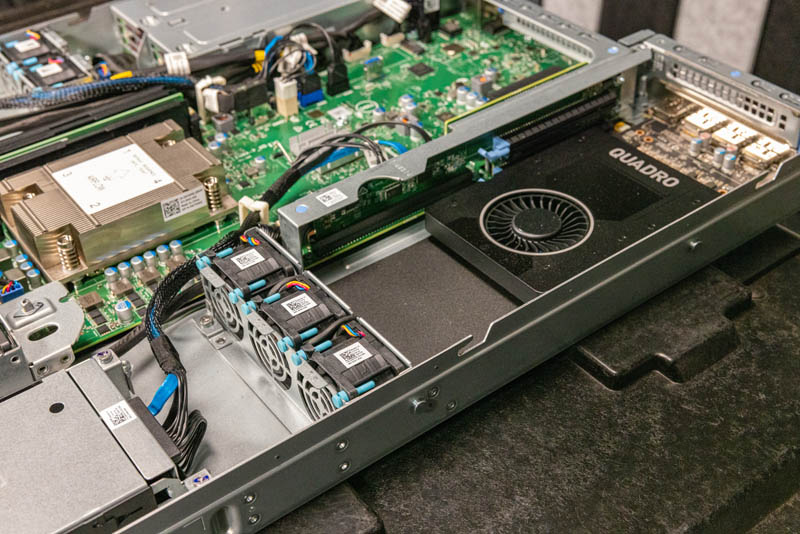
Here we have the NVIDIA Quadro P2000 GPU. One can see a second slot so one can put a second single-width GPU here in a x8/x8 configuration. We saw configurations up to 250W GPUs on double-width GPUs but that requires a different PSU configuration and a few other changes compared to what we have.
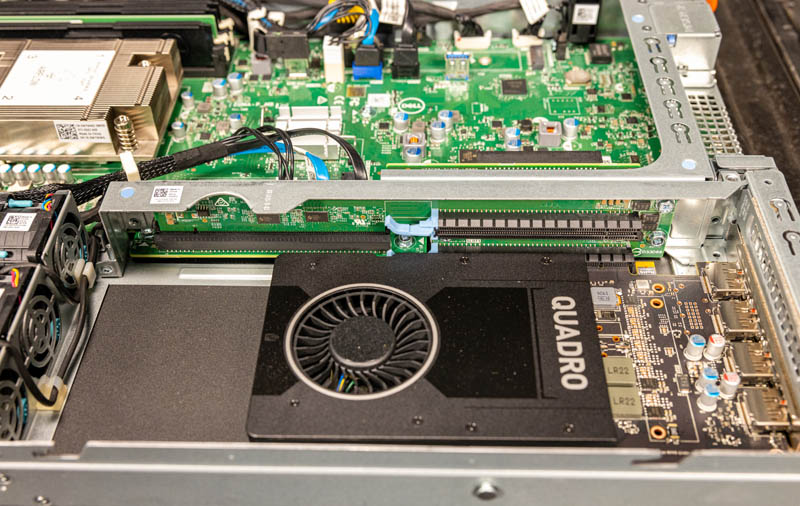
Overall, there is a lot going on in this system.
Let us next get to the performance.




The Windows for Workstations tax is unacceptable. The vast majority of users for these workstations will never use any of the features. For those that do, they have easy access to the upgrade. Requiring users to purchase it when the system isn’t even equipped with RDMA NICs and doesn’t support PMem is ridiculous. ReFS is still a (cool) technical preview, and rarely — if ever — used in production.
Windows for Workstations is a valuable SKU for those that need it, but on these systems it leeches value from the solution and angers customers.
Dell: “The world’s most powerful 1U rack workstation.”
Processors: One 9th hem Core i3, i5, i7 and i9 or E-2200 family with up to 8 Cores OR
8th gen Core i3, i5 and i7 and Intel Xeon Processor E-2100 family of CPUs with up to 6 cores
I wish for a intel 12th gen worstation :(
I’m curious about what the plan is for the ports on this one.
It’s the sort of selection that one would want on a workstation/desktop; but a 1U fan array is very much not what you’d want on your desk.
The Supermicro system you compared it to seemed to have that in mind: basically just basic server management and NICs with the intention of being remotely accessed.
You certainly could do that with this one; but there would be a lot of ports just sort of sitting there; and while there are KVMs that will do extension of more than just a VGA port and a couple of USB HID things; getting a couple of displayport outs, some 5 or 10Gb USB and the like extended would be exotic and expensive; and if you are just going to VDI in that’s a lot of bezel that would have been better off as vents or extra drive bays or something.
@fuzzy, I agree – although this is a cool system, I’m struggling to figure out who buys it. No way do I want a rack next to my desk, and most IT shops don’t just allow users to wander into the server room (or access a rack in a closet) and start plugging USB drives and SD cards into devices. Still scratching my head trying to picture who buys this and why. Whoever it is, that niche customer is probably part of the reason they’re relatively inexpensive used (“refurbished”) units… Can anyone think of a use case for this strange computer?
What a deal at “just over $1000.00”.
It would be a lot more appealing in 2U, my office isn’t that cramped that I want to surround myself with 40mm banshees, err, fans.
Is there a reason you wouldn’t just treat this as a remote workhorse and just RDP into it? The video card etc still does the lifting but you could put a raspberry pi on your desk if you wanted to and still effectively have the same workstation performance.